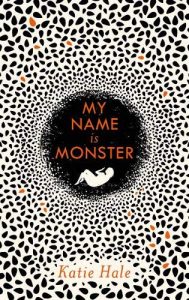 My Name is Monster is divided into two parts in which two women, both with the name Monster, tell their tale. To describe the book, even only a little, will involve some plot spoiling, so if you don’t want to know, don’t read on.
My Name is Monster is divided into two parts in which two women, both with the name Monster, tell their tale. To describe the book, even only a little, will involve some plot spoiling, so if you don’t want to know, don’t read on.
The Monster of Part 1, has the name as a nickname, given to her by her father. She is a woman who prefers things, mechanics, to people. The novel begins with her walking towards her home having been stranded somewhere on the Scottish coastline after the world wars and the sickness have seemingly wiped out all human life.
She walks towards her parents home because it is as good a direction as any.
Slowly, as she walks, our sense of what happened to the world becomes clearer and we see this new world through the eyes of a person who has never really, until now, missed human contact and always sought solitude.
This part of the book begins with a quotation from Robinson Crusoe. Is being alive when everyone else is dead a blessing or not? Like Robinson Crusoe, Monster focuses on survival rather than blessing (in both books this is perhaps an initial focus) and slowly builds a settlement where she farms both vegetable and animal produce.
On one of her trips to the nearby city, she meets a living girl. Her Friday, a person she saves and teaches to speak. Afraid to name herself Monster in front of the terrified girl, she changes the end of the word from M…onster to M…other. Considering the term Monster a signifier of survival, this is the name she gives the girl and so part 2 gives the narrative to the new monster.
There is a sense in which this brave new world is given a monster of Frankenstein’s invention. A sense in which an obsession with language, ownership, morality, make My Name is Monster influenced by both Robinson Crusoe and Frankenstein, only in this version the monster can make a new world, can force its maker to set it free.
However, and perhaps strangely, I found the first part much more compelling than the second. The first Monster had a character that felt real, not necessarily empathetic, but graspable, tangible. The new Monster really is something intangible to me. This is both impressive and alienating. I cared less about a world that would develop under her guidance, but I’m not really sure why.
There are lots of clever ideas within the name Monster, from the Latin monstrum, an omen or warning from the gods whose root monere means to warn. These monsters are portends of the new world to come.
It’s a clever book with some fun world play and some beautiful passages. I think I wished it had gone somewhere else, but I can’t really say where. It’s hard when there are quite a lot of novels at the moment that look at what might become of this world us humans are running into the ground. How do you take this in a new direction? What do you imagine for a world in which very few of us survive? I believe in the importance of thinking about what happens when we’ve finished our project of destruction, and I enjoyed reading this imagined version as I’m sure many others will too. I’m left wanting more, however, which is mostly a good thing I think. Roll on Katie Hale’s next novel, but don’t forget to read this one when it comes out in June. My Name is Monster is a novel of ideas that reworks old ideas in new and intriguing ways and will certainly get you thinking about how we live now and how we might live differently if given a chance to start again.
I’m reviewing The Snakes by Sadie Jones next.